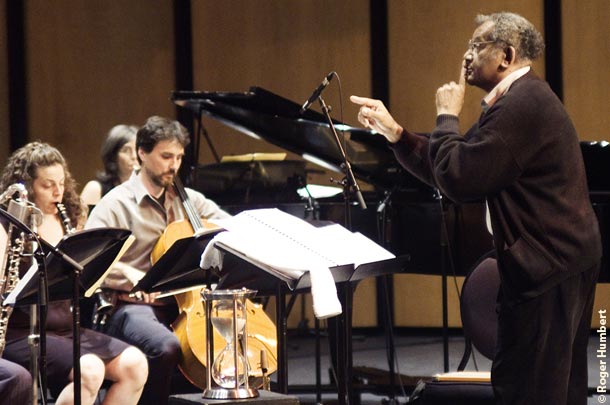Often his hands made a triangle in front of the orchestra. Some of the musicians seemed to respond.
Some of the musicians mutely behaved like they still didn't know how they fit in.
And some of the musicians like pianist Tanya Gill and bass clarinetist Ronda Rindone also started conducting and used hand signals.
Accordingly, this evening's assembly had the (anxious) quality of a family gathering where each member still has to negotiate with the host in order to take a seat and have their say.
But there were no belligerent sounds this evening. In fact, it was a prime example of how Braxton brings people together to play music. They have free agency and they have to make choices.
He seemed preoccupied with sound mass, strands of sound, and complete silence; and how to string all this together?
Such an approach to conducting required considerable patience from both Braxton and the audience.
But once again, Anthony Braxton taught us something — music is much more than themes and sensuous sound.
Music is so often a metaphor, like the inverted hourglass that sits on the stage, its measured time pouring through the growing time of the music.



